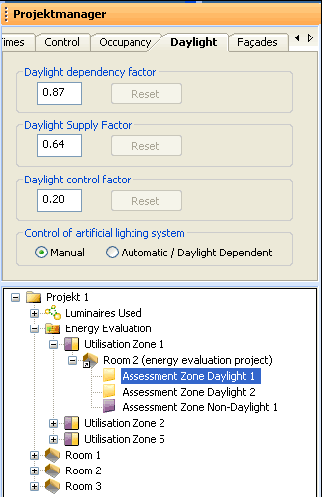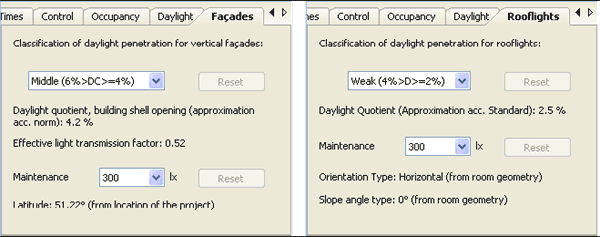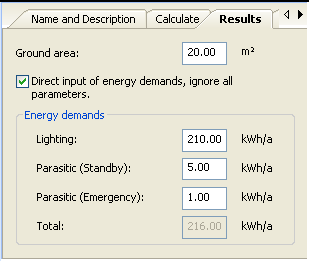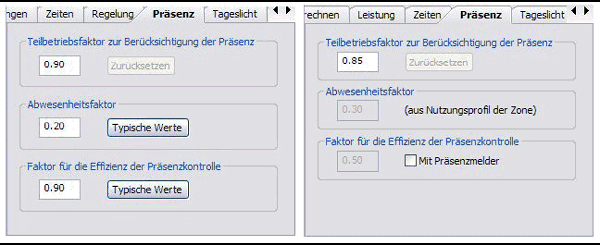- Главная
-
Учебник
- DIALux 4
- DIALux evo
- IES
- Форум
- Галерея
- Блоги
-
Скачать
- DIALux
- Базы
- Плагины
- 3D модели
- Текстуры
- Книги
-
Новости
Working on parameters
11 сентября 2012 - АдминFor each assessment zone you can (have to) adjust a lot of parameters, influencing the energy demands of that assessment zone. There are partly different parameters for the EN 15193 and the DIN 18599.
When using the DIN 18599, there are some parameters taken from the so called utilization profile of the super ordinate utilization zone. That can’t be done in EN 15193, since there is no such profile.

Fig. 426 Utilisation profile of an utilisation zone in a planning according to DIN 18599
Furthermore, there are some parameters only for daylight supplied assessment zones.

Fig. 427 One property page of a daylight supplied assessment zone
Some only for special daylight sources.

Fig. 428 Property pages for assessment zones, that are daylight supplied by windows respectively roof lights
Assessment zones of unlinked energy evaluation rooms have additional parameters, since direct input of energy consumption is possible.

Fig. 429 Direct input of energy consumption values in unlinked energy evaluation rooms
Most parameters can be edited in the common manner, others can only be read and some others can be edited normally and are resettable to an internally calculated value in addition.

Fig. 430 Occupancy parameters of an assessment zone in EN 15193 (left) and in DIN 18599 (right)
Within a EN planning the parameters “Absence Factor” and “Factor for Occupancy Control” can both be edited in the common way. Both have even a supporting functionality to set them to typical values. The parameter “Occupancy Dependency Factor” results from these two parameters by expressions and formulars from the EN 15193. One can easily understand that by changing one of the first two parameters and watch the changes of the third one. There is exactly one calculated value of the third parameter that results from the other ones. Nevertheless, the third parameter can be edited in the common way. There may be special circumstances or information, that define this parameter differently. So when you edit such a parameter, this will be stated in the output. The documentation will include not only the edited value, used for the energy evaluation, but also the initially calculated value, resulting from the other parameters. In such cases, you are well advised, to state why you changed the calculated value in the description of the assessment zone. If you want to return to the calculated value, you can easily reset it by pressing the “Reset” button.
Within a DIN planning the “Absence Factor” is only readable, because it belongs to an utilization profile. The “Factor for Occupancy Control” is only readable as well, because it is only changed by the selection of “With Occupancy Sensor” yes or no. For the “Occupancy Dependency Factor” the same holds as with EN 15193.
There are a lot of relations and dependencies between parameters. They all have one thing in common: the duty of documentation, to explain and circumstantiate calculated energy demands.Рейтинг: 0 Голосов: 0 5792 просмотраКомментарии (0)Manual
